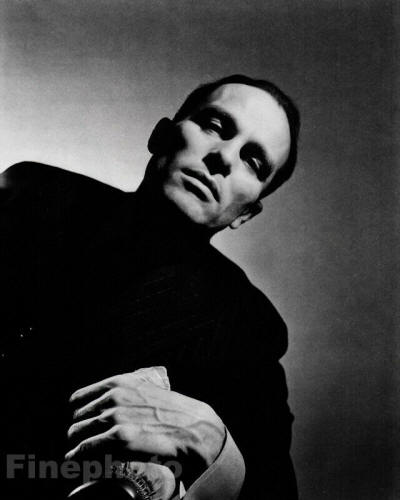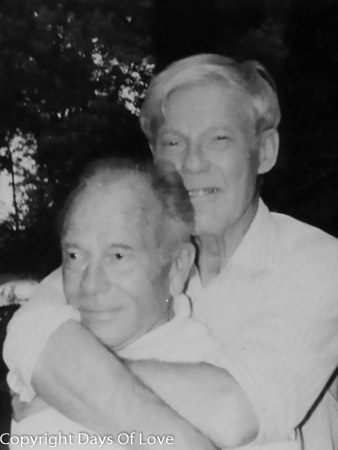
BURIED TOGETHER
Partner Glenway Wescott, George Platt Lynes, buried together with Glenway Wescott
Queer Places:
17 Christopher St, New York, NY 10014
Stone-blossom, Clinton, NJ 08809, Stati Uniti
410 Park Ave, New York, NY 10022, Stati Uniti
Haymeadows, Raven Rock Rosemont Rd, Stockton, NJ 08559, Stati Uniti
 Monroe Wheeler (February 13, 1899 - August 14, 1988) was a publisher and
museum coordinator, heavily involved, in various roles, with the Museum of
Modern Art, New York.
Monroe Wheeler (February 13, 1899 - August 14, 1988) was a publisher and
museum coordinator, heavily involved, in various roles, with the Museum of
Modern Art, New York.
Monroe Wheeler was born on February 13, 1899, in
Evanston, Illinois.
In 1919 Wheeler met his longtime companion
Glenway Wescott and in the 1920s they
worked and lived in Germany and France. In 1922, in Germany, Wheeler published
''Manikin'' (later ''The Indians in the Woods'') by Janet Lewis. Before her
marriage to Lloyd Wescott, Glenway's brother, Barbara Harrison and Wheeler
established "Harrison of Paris", a press publishing limited-edition literary
paperbacks. From 1930 to 1934, Harrison of Paris published thirteen titles,
including two new works by Glenway Wescott. Wheeler published also deluxe
illustrated books and limited-edition prints for artists by the like of
Picasso, Renoir and Chagall. In 1934, shortly before Barbara Harrison married
Lloyd Wescott, the press relocated to New York, where it published a final
title, Katherine Anne Porter's ''Hacienda''.
For over ten years,
photographer George Platt Lynes had
a love affair with first Wheeler and then Wescott, living in a menage a trois.
Another of Wheeler's lover was
Christian William Miller.
Wescott and Wheeler returned to the
United States and maintained an apartment in Manhattan with photographer
George Platt Lynes. When his brother Lloyd moved to a dairy farm near Clinton,
New Jersey, in 1936, Wescott along with Wheeler and Lynes took over one of the
farmhand houses and called it Stone-Blossom. By Platt Lynes' death in 1955,
the relationship with Wheeler was ended.

by
George Platt Lynes



Wescott Farm

In 1935 Wheeler joined the
Museum of Modern Art, New York, first as a member of the Library Committee and
director of Ignatz Wiemeler, Modern Bookbinder, then, 1938, Director of
Membership, and by 1939, Director of Publications. In 1940, he became the
first Director of Exhibitions. In 1944 he was elected a Trustee of the Museum,
followed by member of the Executive Committee, the Exhibitions Program
Committee, and the Coordination Committee. In 1948, Wheeler continued to run
the Exhibitions and Publications department while overseeing the management of
all of the Museum's operating outreach programs, including education,
traveling (or circulating) exhibitions, and the library.
During the
period between 1940-1967, Wheeler managed much of the logistics of the
circulating exhibitions program and developed a strong publications program.
Wheeler also directed museum exhibitions such as ''Modern Painters and
Sculptors as Illustrators'' (1936) and ''Turner: Imagination and Reality''
(1966). Under his direction the Museum produced over 300 books, both
monographs and exhibition catalogues, among the others, Edward Steichen's book
of photographs ''The Family of Man'', and John Rewald's ''History of
Impressionism''. Wheeler wrote many of the works published by the Museum,
including monographs about Soutine and Rouault.
During World War II,
Wheeler served as Chairman of the Committee on Publications for the Office of
Inter-American Affairs under Nelson A. Rockefeller.
In the 1950s, upon
the suggestion of Monroe Wheeler, Hermann Zapf decided to adapt his typeface,
''Optima'' to be used as a book type. Optima is the first German typeface not
based on the standard baseline alignment that had been used up until this
point in time.
In 1954 Wheeler, at the time head of the department of
exhibitions and publications at New York's Museum of Modern Art, while in
Calcutta, heard about the project for ''Pather Panchali'', a 1955 Indian
Bengali-language drama film written and directed by Satyajit Ray and decide to
meet the director. He considered the incomplete footage to be of very high
quality and encouraged Ray to finish the film so that it could be shown at a
MoMA exhibition the following year. Six months later, American director John
Huston visited India for some early location scouting for ''The Man Who Would
Be King''. Wheeler had asked Huston to check the progress of Ray's project.
Huston saw excerpts of the unfinished film and recognised "the work of a great
film-maker". Because of Huston's positive feedback, MoMA helped Ray with
additional money.
In 1959, when his brother Lloyd acquired a farm near
the village of Rosemont in Delaware Township, Hunterdon County, New Jersey,
Wescott moved into a two-story stone house on the property, dubbed Haymeadows.
In 1969, he accompanied Nelson A. Rockefeller on an official U.S.
appointed tour of Latin America as a Cultural Advisor. As a part of the
International Program and under the auspices of the International Council, in
1965 Wheeler directed the exhibition ''Cézanne to Miró''.
In 1965
Wheeler was appointed an Honorary Trustee of the Museum and, in 1967, upon his
retirement, he was appointed a Counsellor to the Trustees. He continued to
maintain ties to the Museum by working with the International Council and
participating in a number of committees, including Prints and Illustrated
Books, Photography, Drawings and Exhibitions.
In 1973, Russell Lynes,
writing about the History of the MoMa, said: "It was as a diplomat, an
organizer and a publisher, not as a scholar, that he made his career in the
museum".
Other than with the MoMA, Wheeler was: Trustee and First Vice
President of the New York Genealogical and Biographical Society, a Trustee of
the Katherine Anne Porter Foundation, a Trustee of the Ben Shahn Foundation, a
member of the Council of the Grolier Club, and President of the International
Graphic Arts Society. He played an active role in the American Institute of
Graphic Arts as well.
In 1987, Wescott died of a stroke at his home in
Rosemont and was buried in the small farmer's graveyard hidden behind a rock
wall and trees at Haymeadows. Monroe Wheeler died on August 14, 1988, in New
York City and is buried alongside Wescott.[1]
My published books:


BACK TO HOME PAGE

- ^ https://www.moma.org/learn/resources/archives/EAD/wheelerf


 Monroe Wheeler (February 13, 1899 - August 14, 1988) was a publisher and
museum coordinator, heavily involved, in various roles, with the Museum of
Modern Art, New York.
Monroe Wheeler (February 13, 1899 - August 14, 1988) was a publisher and
museum coordinator, heavily involved, in various roles, with the Museum of
Modern Art, New York.

